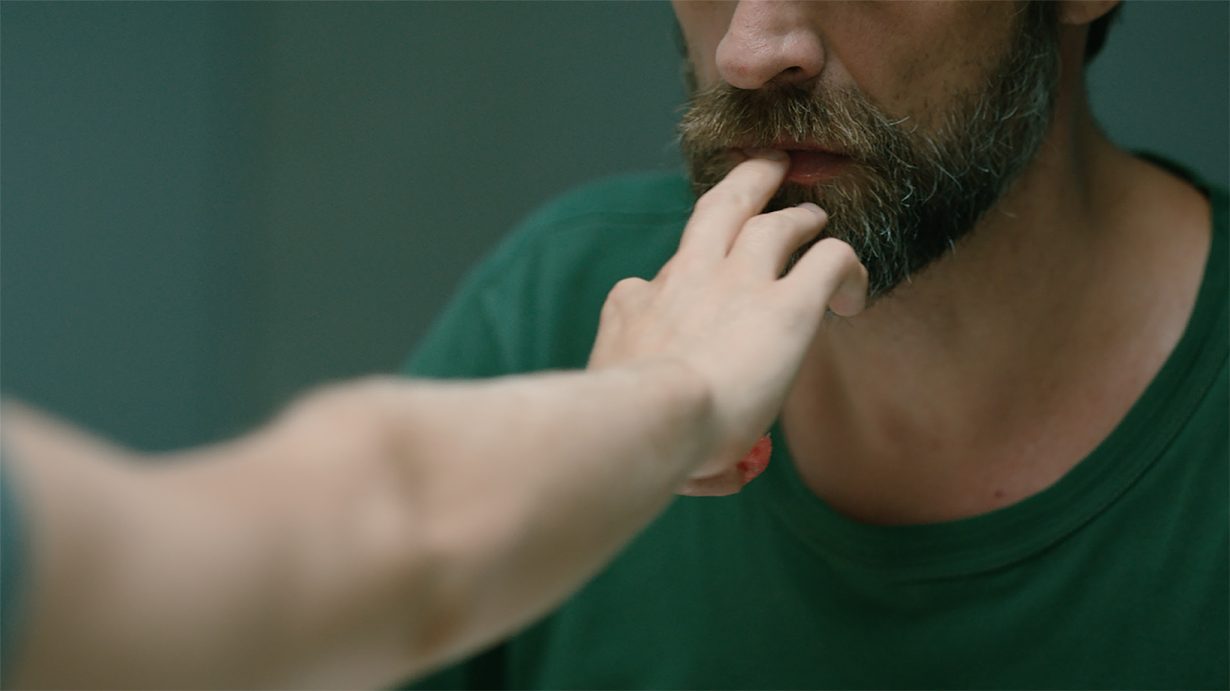
ArtReview sent a questionnaire to artists and curators exhibiting in and curating the various national pavilions of the 2022 Venice Biennale, the responses to which will be published daily in the leadup to and during the Venice Biennale, which runs from 23 April to 27 November.
Adina Pintile is representing Romania; the pavilion is in the Giardini. Pintile, along with curators Cosmin Costinaș and Viktor Neumann, have responded to this questionnaire.
ArtReview What can you tell us about your exhibition plans for Venice?
Adina Pintile, Cosmin Costinaș and Viktor Neumann Under the name You Are Another Me – A Cathedral of the Body by artist and filmmaker Adina Pintile, we will be showing a multichannel film installation in a reimagined architectural setting of the pavilion. In the work, Adina imagines a space of togetherness beyond borders and binaries, departing from a particular visual universe and aesthetics, as well as through a rethinking of the role and power of the moving image. The project marks the next stage of Adina’s multiplatform research on the politics and poetics of intimacy and the body, initiated with her feature film Touch Me Not – winner of the Golden Bear at the 2018 Berlinale. Emerging from Adina’s personal experiences, background and research, and nurtured by long-term collaboration with the protagonists, the work explores the central role of intimacy in the everyday. We hope it will spark different possibilities to see, to think and to relate to each other.
AR Why is the Venice Biennale still important?
AP, CC & VN Perhaps one should not overestimate the Venice Biennale’s role in the global artistic context. Both artistic production and opportunities for international exchange happen around the world, and this has been a much welcome evolution in the past decades. Certainly the Venice Biennale continues to mobilise resources that still make it a particular opportunity for artists and audiences from many contexts to meet and exchange ideas.
AR Do you think there is such a thing as national art? Or is all art universal? What is misunderstood or forgotten about your country’s art history or artistic traditions?
AP, CC & VN We detest thinking of art through the lens of national belonging, yet considering art as simply universal is also problematic, as there are many experiences and backgrounds that shape artistic practice which are context-specific even if not necessarily national. What does seem to be universal is a continuous underrepresentation of non-male identified artists, as is the case for the tradition of the Romanian Pavilion, among many others. Adina’s solo project is only the second of a female artist in the history of the Romanian Pavilion (and the first one was only in 2017, with Geta Brătescu). Moreover, there are many contexts around the world which are being approached through an exoticising or patronising gaze. Romania (and Eastern Europe) are in a more complicated position. But given the current circumstances, the resurgence of rightwing forces (with a particular virulence in Eastern Europe), the Russian invasion of Ukraine motivated by a fascist ideology and a general divestment from globalisation and a loss of faith in the ethics of internationalism, there is a risk of becoming more and more alien to each other.

AR Which other artists from your country have influenced or inspired you?
AP, CC & VN We think that the project is inscribed in a lineage of Romanian artists who have responded in different ways over the past two decades to the question of national representation. It continues a conversation about who represents the nation and who is excluded, about collective shame and responsibility, and in Adina’s proposition also about Romanian society’s fraught history of dealing with intimacy, sexuality and bodily diversity, and by extension with solidarity between the individuals.
AR What else are you looking forward to seeing?
AP, CC & VN Our friends and colleagues whom we haven’t seen since the beginning of the pandemic and the many promising artistic propositions, both in the Biennale and around the city.